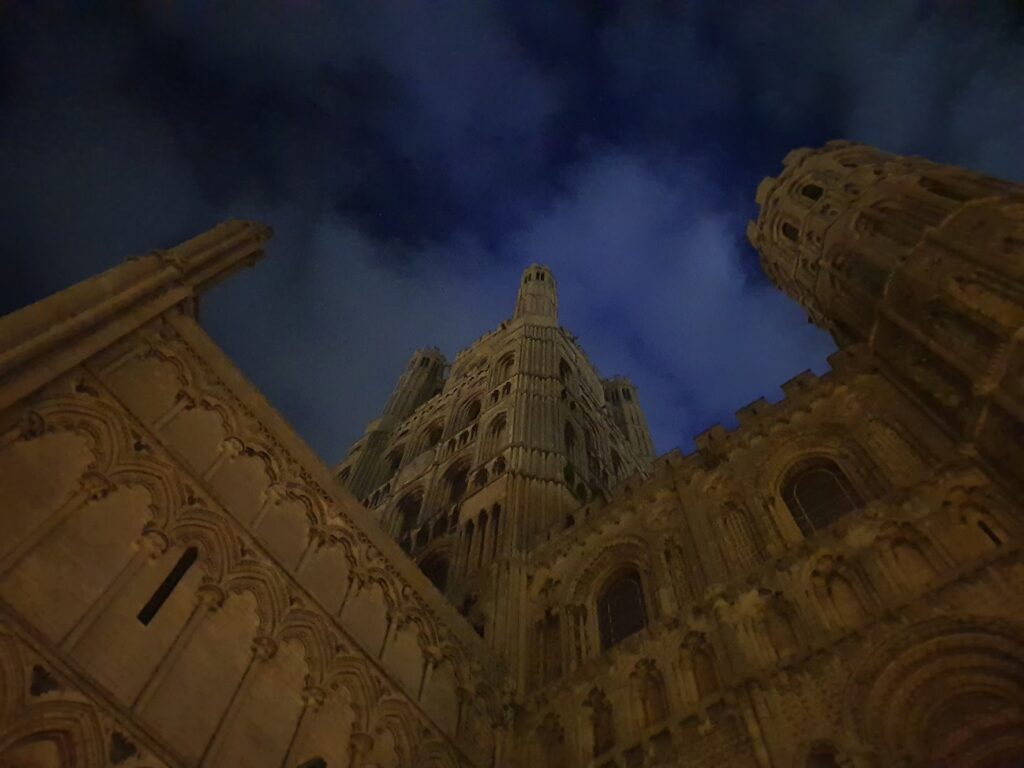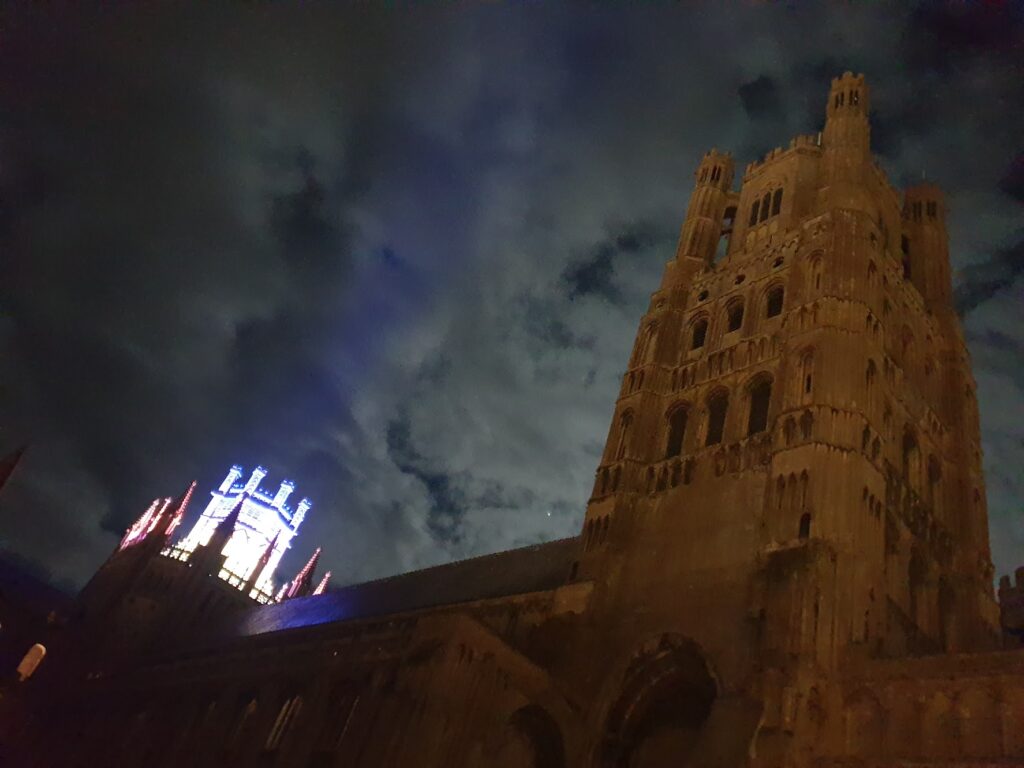
Yesterday took me through the heavily populated West Midlands to Rugby, home of the famous public school where William Webb Ellis first picked up the football and ran with it, creating a new sport. Today promised a more rural day and hopefully less busy roads. The school dominates the centre of the town in an attractive way and behind it is a large green space that you can see but not visit. Here are the beautifully kept rugby pitches and I started my day, in more sunshine, gazing out across the spiritual home of the sport I played quite seriously (and quite well, if I say so myself) until I was 18. Then it was a fiercely amateur sport. Now it is a big money professional game and it has changed completely. I don’t think I would enjoy it any more, partly because I am probably too small. It used to be a game that offered something to people of all sizes and shapes, as long as you were fairly fit. Now, it seems to me, you have to be huge AND fast to play in just about any position, forward or back, and the risk of injury seems much greater as a result. The body can only withstand so much impact. Either way, my rugby playing days are long behind me. I reached county level at school age, playing as a full-back (number 15), which given my family heritage was probably over achieving, so I will happily leave it there.
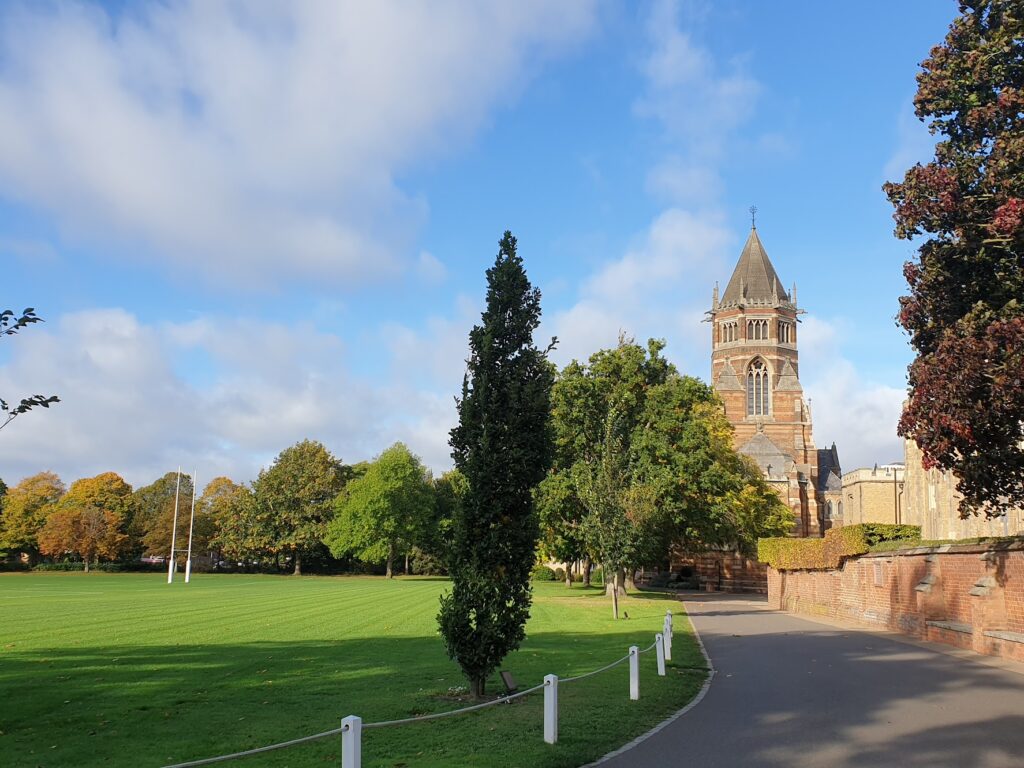
Straight out of Rugby I was back into delightfully quiet country lanes across rural Northamptonshire, “The Rose of the Shires”. This countryside was surprisingly hilly and offered plenty of attractive orange stone villages with prominent churches. It felt a bit Cotswolds, only without the tourists. After an hour or so, I passed through Naseby, whose name goes before it as the site of a famous and decisive battle in the English Civil War. It was fought on my birthday, 14th June, 1645, when the Parliamentarian New Model Army, under the command of Sir Thomas Fairfax, defeated the Royalist Army under the command of King Charles I. The cavalry charge that decided not just the result of the battle, but also the war, was led by Oliver Cromwell, who became Lord Protector during the years of Commonwealth that followed. A small obelisk now marks the site and you can look out across the fields where the battle was fought. It looks just like everywhere else in the area now. Just gently undulating arable fields, hedges and a few trees.
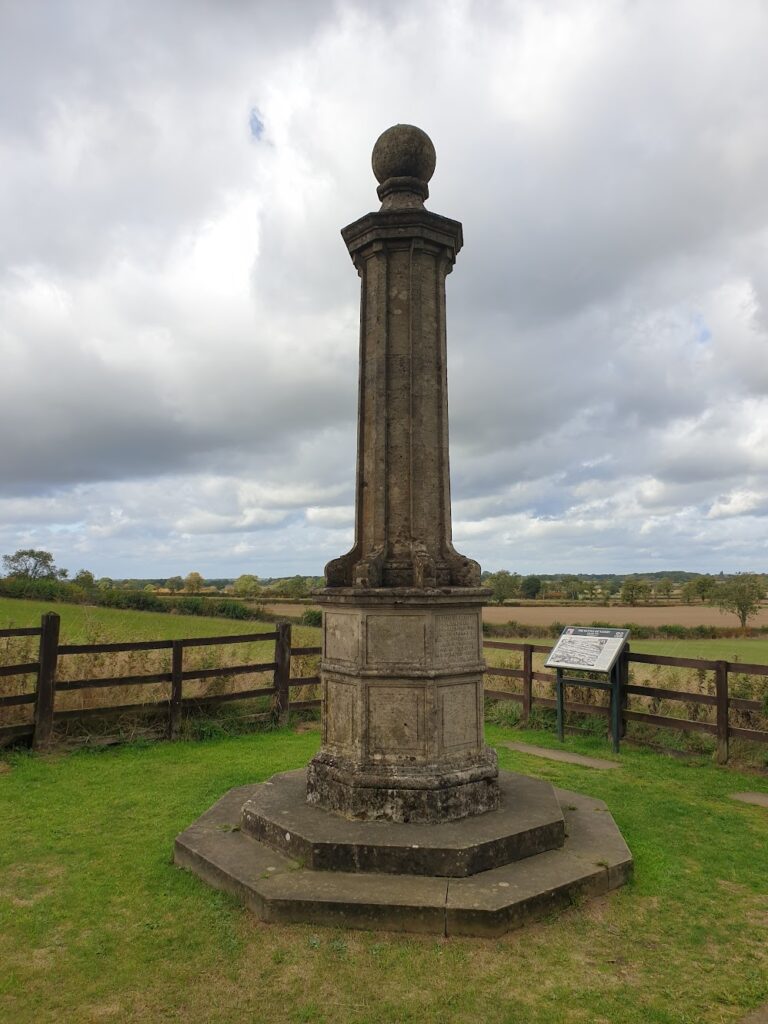
Moving along, I continued east towards the small town of Rothwell, a place about which I new nothing. An information board in the town centre told me it was often locally pronounced ”Rowell”. It had a enormous church, the longest in Northamptonshire, apparently. While I ate lunch on a bench, the bell ringers were out in force, and I can tell you they have a lot of bells in their tower. I counted at least ten different tones, which means at least factorial ten possible combinations. That is a very big number, so they shouldn’t be getting bored! The church is also remarkable for its bone crypt (open to visitors on Sunday afternoons), which contains the 13th century remains of some 2,500 individuals. Their skulls are arranged on shelves and the thighbones are stacked in two large, square piles! One for the diary.
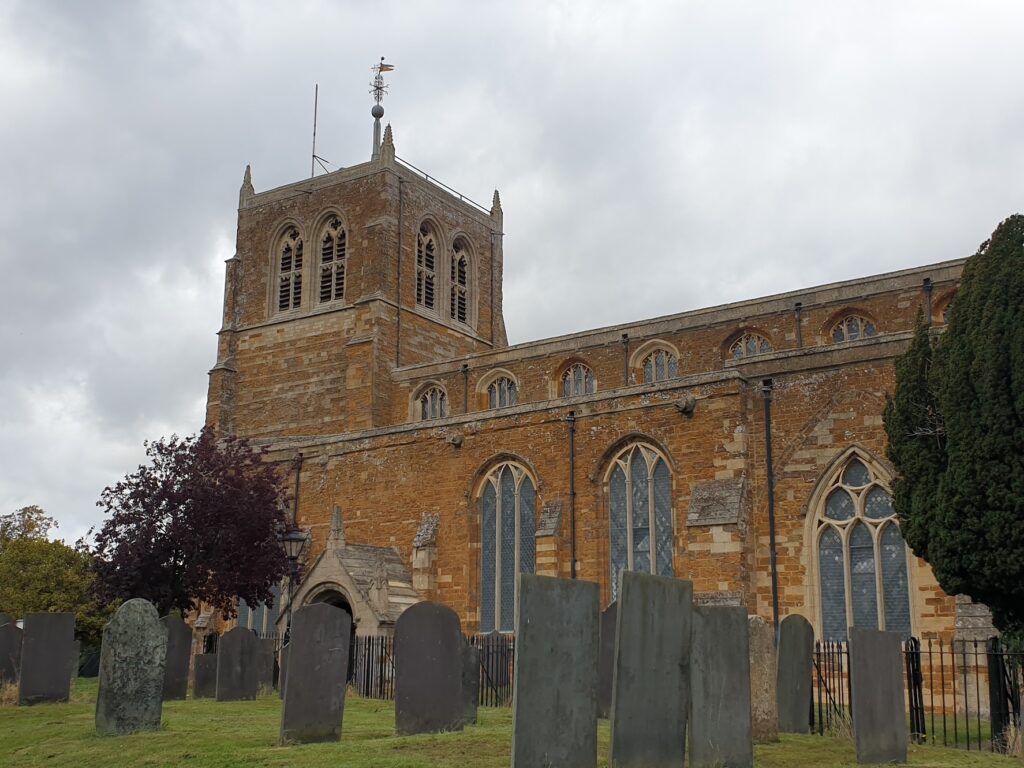
Just a few miles further on I came to a most unusual building, the Rushton Triangular Lodge. This was built in the late sixteenth century by a prominent Catholic, Sir Thomas Tresham, during turbulent times when religious beliefs could land you in prison or worse. Such was his fate for a total of sixteen years for refusing to become a protestant. He used architecture to express his religious beliefs. The lodge is full of symbolism, especially the number three, representing the holy trinity. There are three floors, three sides, three gables on each side, triangular windows, a triangular chimney, and so on. It is rarely open to the public at the moment, so I had to peer over the wall on tiptoe.
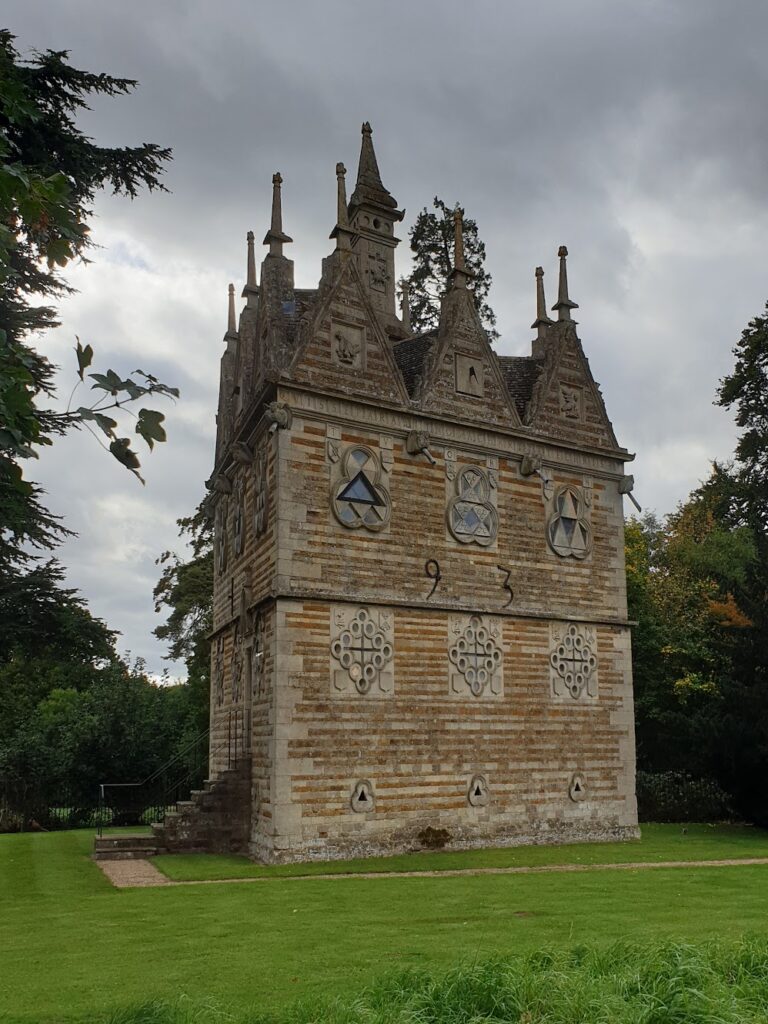
In another few miles, I arrived in the gorgeous and historically important village of Geddington. In the village centre, where 3 quiet roads meet, stands one of only 3 remaining Eleanor Crosses (out of an original 12), erected by the distraught King Edward I after his wife Eleanor of Castile died in Harby, near Lincoln. Each cross marked the location of an overnight stop of the funeral cortege. I wrote about this when I was on the way to Skegness, not knowing that my route today would take me right past this rare surviving example. I am so glad it did. It was most impressive. A local historian, an American by his accent, walked up to me and began to lecture me at great length about the significance of this place. He was wearing a funny floral sunhat, which the weather – and any sense of fashion – did not really justify, and I found it rather off-putting. But I learned a great deal from him before I managed to escape after perhaps 20 minutes.
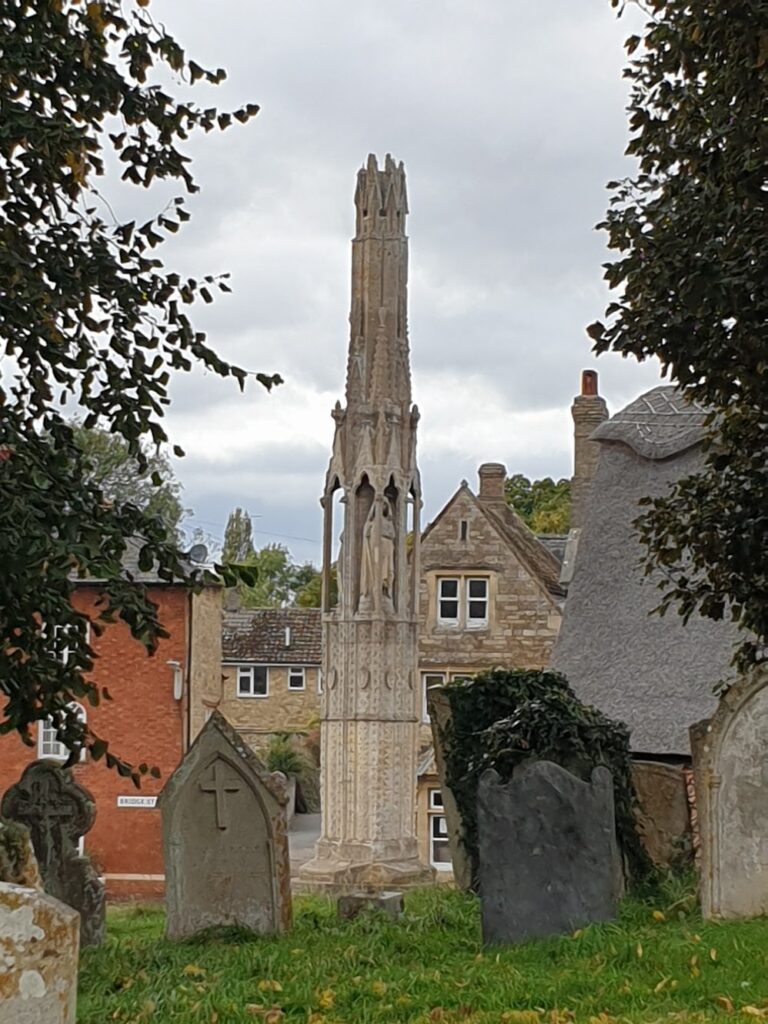
It seems that Geddington was a place of some importance to the Plantagenet Royal family, and indeed right up to Elizabeth I. Many of the monarchs visited a palace here, now lost, and some of them – notably King John – were regular visitors and hosted royal visitors from overseas. My guide spoke of all manner of unusual objects within the church that stands just behind the cross, some linked to Eleanor and quite out of character for churches of the day. The Normans, he said, built around the original Saxon church rather than demolishing it, as would have been more usual. And there is a midget jester carved into the alter (which I looked for and possibly found), and that would have been quite out of order; but possibly a gift to Eleanor, he said. There was great passion in his story telling and I found myself wanting to know more; but ideally from another source to corroborate what was coming from this sun hatted, rather eccentric man. I felt he was talking up his adopted home to heights that somehow the rest of the world had failed to see or understand. I am not disagreeing with his claims. It was more the way he dismissed much of what was on the information boards as untrue, as if there were some great conspiracy. That and the sun hat. And the fact he was distributing leaflets for a ghost walk. But clearly this is a special place today, with its ancient cross, bridge, church and thatched buildings, just as it was to Edward and Eleanor all those centuries ago. Exactly how special we may not know; but it is fun to imagine.
The whole Geddington experience left me in high spirits, but also a little behind the clock. I pushed on over the many arched stone bridge across the River Nene at Thrapston, which today is a cross between an ancient town and a collection of massive distribution warehouses for the likes of Morrisons. In the empty miles ahead, it got slowly flatter but never quite fen-like, as I made it beyond the A1 through agricultural land still largely bereft of any other traffic. And then it started to rain. I knew it might. I was playing a a game of chance and I lost. For about 45 minutes, just as I went under the east coast railway line and hit Cambridgeshire, it turned very wet. The strong breeze stayed behind me, fortunately, but the change in weather seemed to make everything worse all at once. As I got wet, so I got cold, and had to make a couple of stops when shelter was available to pull out heavy duty wet weather gear and dry gloves. The traffic seemed to increase suddenly at this point, too. So if I haven’t got much nice to say about places like Warboys and Earith, you know why.
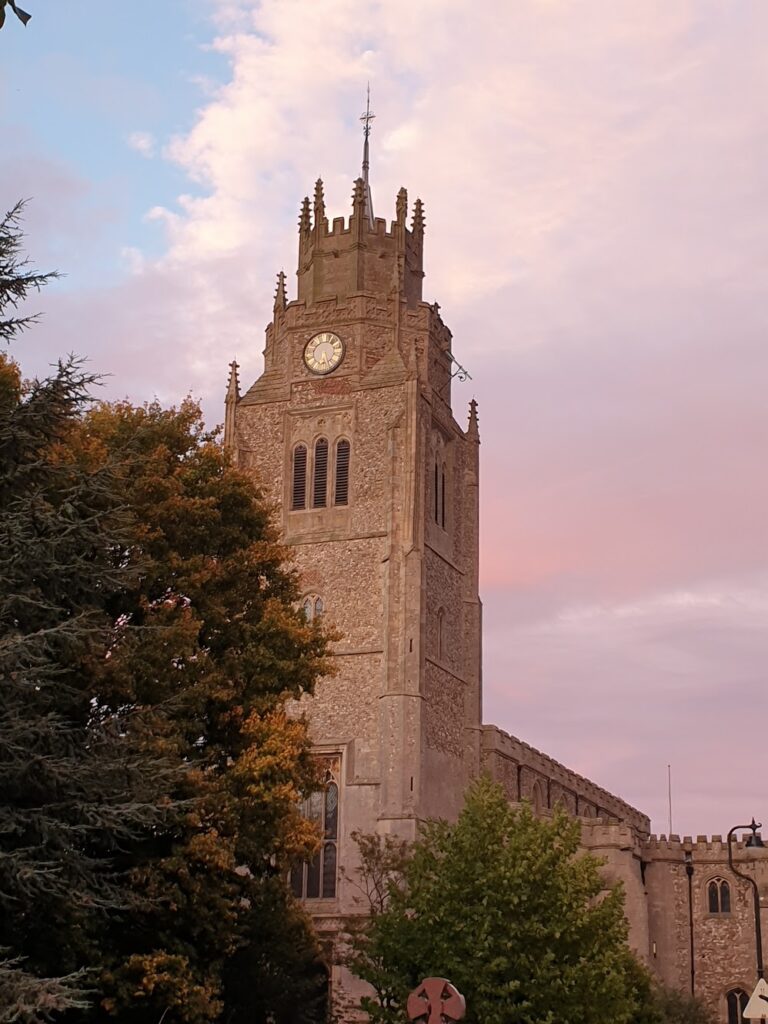
In the end, though, the sun returned and I crossed the last few miles over flat fens between villages on raised ”islands” like Sutton, whose church was visible from several miles away with its unusual wedding cake shaped tower. The sky was pink behind it and it looked splendid. But not, obviously, quite as splendid as Ely Cathedral, a few miles further on and journey’s end today. Once more, I had just about fit in to my day everything I needed and wanted to before daylight ran out completely. That won’t get any easier. But for now, a little rain apart, with less than a month to go, this adventure continues to plan.
